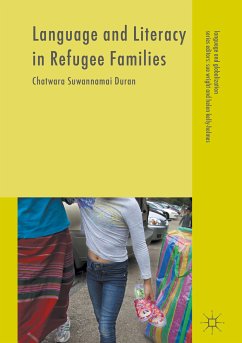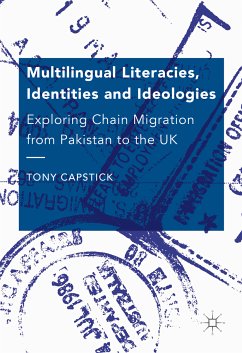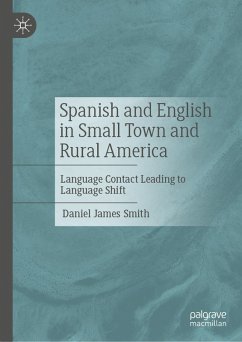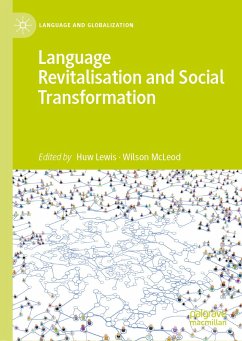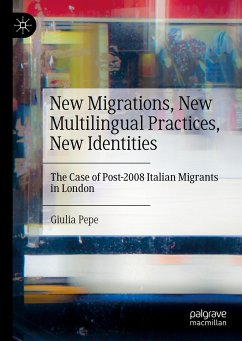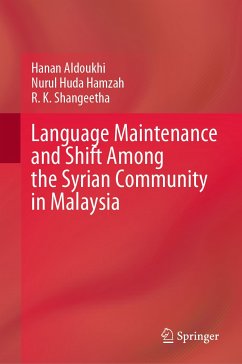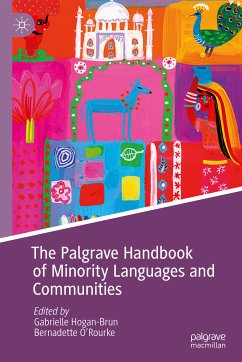
The Palgrave Handbook of Minority Languages and Communities (eBook, PDF)
Versandkostenfrei!
Sofort per Download lieferbar
177,95 €
inkl. MwSt.
Weitere Ausgaben:

PAYBACK Punkte
89 °P sammeln!
'This Handbook is, quite simply, a tour de force. Offering far greater breadth, depth and analytical heft than ever before, it extends the fields of minority language studies and multilingualism conceptually, disciplinarily, geographically, and pragmatically. It is sure to be a key reference for years to come.'-Stephen May, University of Auckland, New Zealand 'This Handbook offers detailed accounts of minority language communities on every continent and presents a stunning testament to the resilience of minority language policy actors and community identities in the face of migration, mobility...
'This Handbook is, quite simply, a tour de force. Offering far greater breadth, depth and analytical heft than ever before, it extends the fields of minority language studies and multilingualism conceptually, disciplinarily, geographically, and pragmatically. It is sure to be a key reference for years to come.'
-Stephen May, University of Auckland, New Zealand
'This Handbook offers detailed accounts of minority language communities on every continent and presents a stunning testament to the resilience of minority language policy actors and community identities in the face of migration, mobility and globalizing forces.'
-Nancy H. Hornberger, University of Pennsylvania, USA
'This outstanding collection of perspectives makes a signal contribution to practical understanding and intervention in legal, educational and policy fields. Expertly edited to produce coherence of focus and consistency of treatment it provides excellent coverage of a diverse range of settings across the world. It is a consolidated resource that rewards regular reading and deep study.'
-Joseph Lo Bianco, University of Melbourne, Australia
This Handbook is an in-depth appraisal of the field of minority languages and communities today. It presents a wide-ranging, coherent picture of the main topics, with key contributions from international specialists in sociolinguistics, policy studies, sociology, anthropology and law. Individual chapters are grouped together in themes, covering regional, non-territorial and migratory language settings across the world. It is the essential reference work for specialist researchers, scholars in ancillary disciplines, research and coursework students, public agencies and anyone interested in language diversity, multilingualism and migration.
Gabrielle Hogan-Brun is Senior Research Fellow at the University of Bristol, UK. She is founding editor of the book series Palgrave Studies in Minority Languages and Communities. Her publications include Minority Languages in Europe: Frameworks - Status - Prospects (ed. with S. Wolff, 2003) and Linguanomics: What is the Market Potential of Multilingualism? (2017).
Bernadette O'Rourke is Professor of Sociolinguistics at Heriot-Watt University, UK. She is Chair of the EU COST Action IS1306 entitled New Speakers in a Multilingual Europe: Opportunities and Challenges (2013 - 2018).
Dieser Download kann aus rechtlichen Gründen nur mit Rechnungsadresse in A, B, BG, CY, CZ, D, DK, EW, E, FIN, F, GR, HR, H, IRL, I, LT, L, LR, M, NL, PL, P, R, S, SLO, SK ausgeliefert werden.
Alle Preise in Euro und inkl. der gesetzl. MwSt. | Innerhalb Deutschlands liefern wir preisgebundene Bücher versandkostenfrei. Weitere Informationen: bitte hier klicken
Support
Bitte wählen Sie Ihr Anliegen aus:
Rechnungen
Bestellstatus
Retourenschein
Storno



